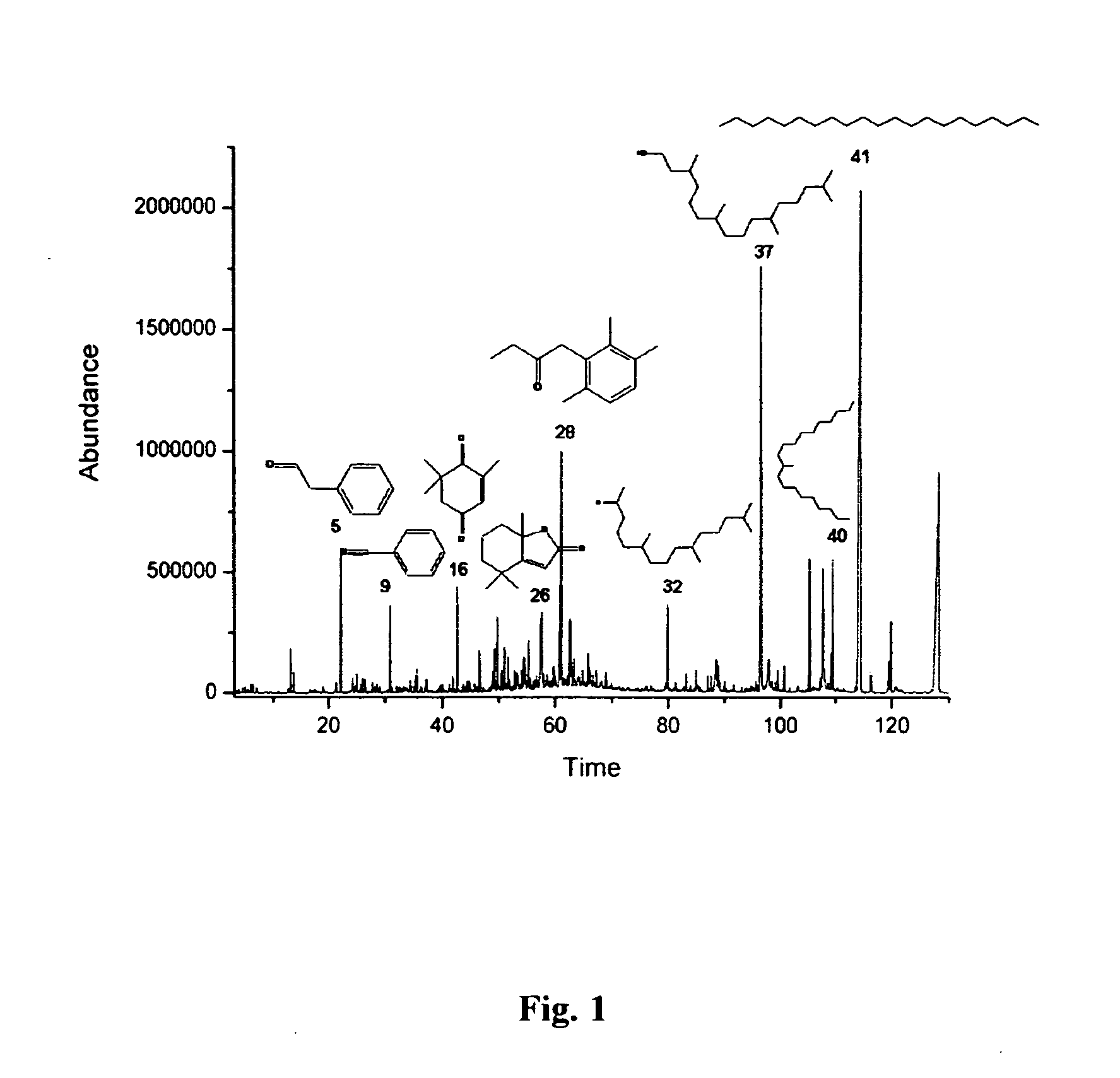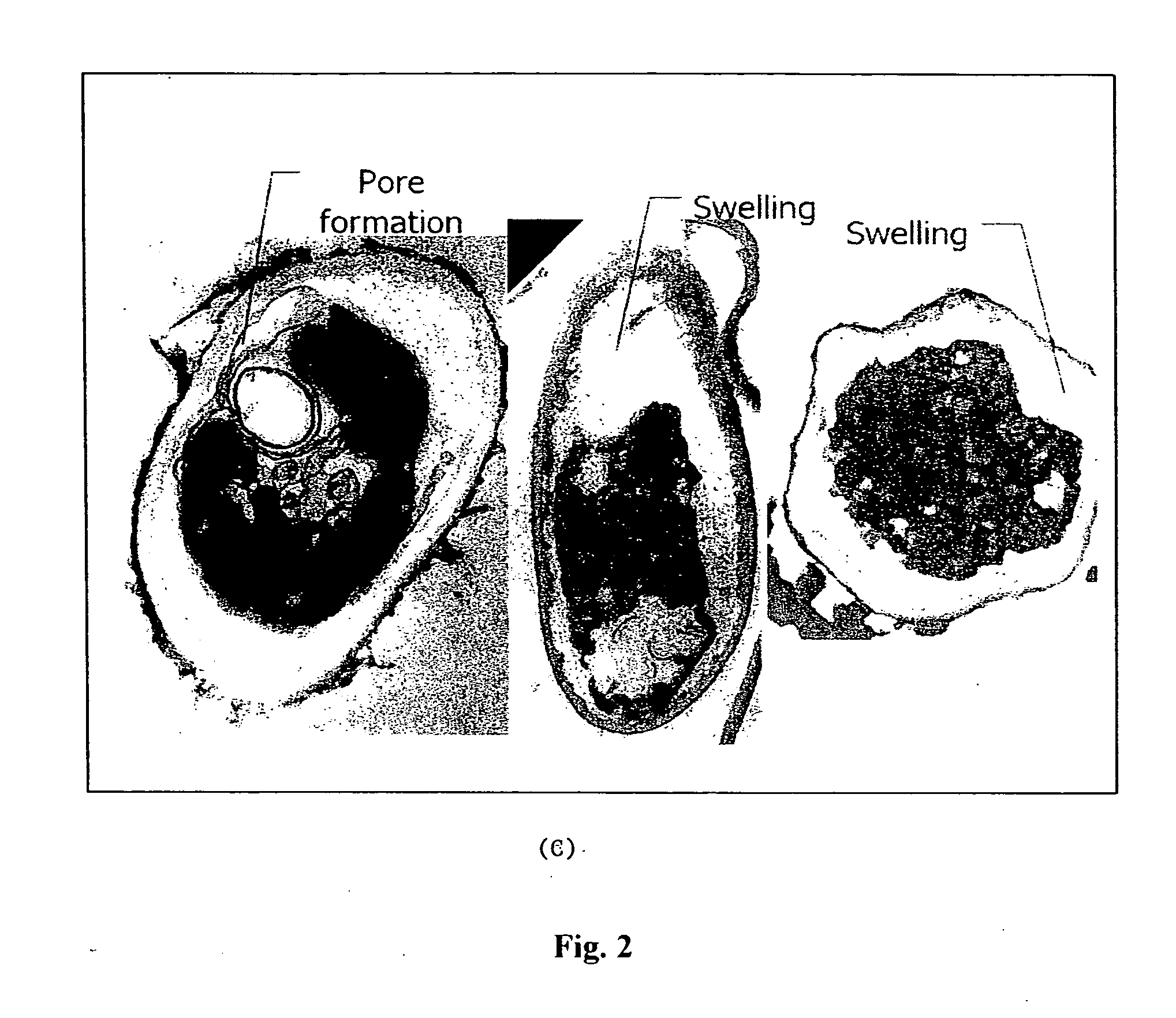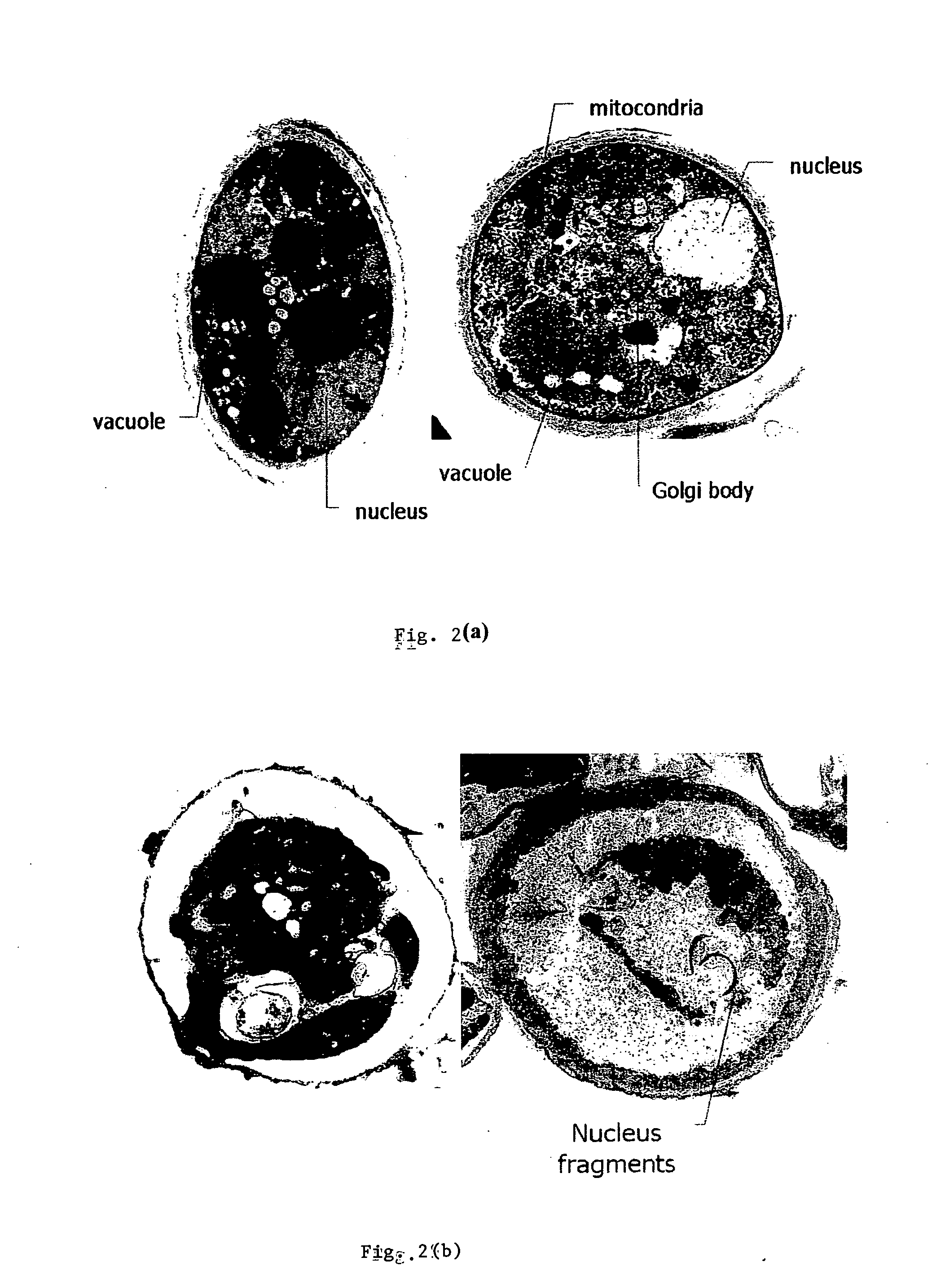Moringa crude extracts and their derived fractions with antifungal activities
a crude extract and antifungal technology, applied in the field of treating fungal infections, can solve the problems of difficult permanent removal, itching, swelling, blistering and scaling, and other types of fungal infections may be more serious
- Summary
- Abstract
- Description
- Claims
- Application Information
AI Technical Summary
Benefits of technology
Problems solved by technology
Method used
Image
Examples
Embodiment Construction
1. Materials and Methods
[0013] 1.1 Materials and Fungal Strains.
[0014]M. oleifera was grown and collected from Taichung, Taiwan. The seeds were de-hulled and the seed kernels dried at 100° C. for 24 h before extraction. The leaves were freshly harvested from M. oleifera trees of at least one-year-old and immediately air-dried. All materials were lyophilized and powdered before experiments. The dermatophytes used in this study were obtained from the Food Industry Research and Development Institute (FIRDI) in Taiwan. Trichophyton rubrum (BCRC 32805), Trichophyton mentagrophytes (BCRC 32066), Epidermophyton floccosum (BCRC 30531) and Microsporum canis (BCRC 30541) were maintained by monthly sub-culturing on Sabouraud dextrose agar (SDA) at 28° C.
[0015] 1.2 Anti-Fungal Assays
[0016] The anti-fungal assays followed the protocol (document M38-A) of The National Committee for Clinical Laboratory Standards (NCCLS) in the USA. The protocol is a standard method for broth dilution anti-fun...
PUM
 Login to View More
Login to View More Abstract
Description
Claims
Application Information
 Login to View More
Login to View More - R&D
- Intellectual Property
- Life Sciences
- Materials
- Tech Scout
- Unparalleled Data Quality
- Higher Quality Content
- 60% Fewer Hallucinations
Browse by: Latest US Patents, China's latest patents, Technical Efficacy Thesaurus, Application Domain, Technology Topic, Popular Technical Reports.
© 2025 PatSnap. All rights reserved.Legal|Privacy policy|Modern Slavery Act Transparency Statement|Sitemap|About US| Contact US: help@patsnap.com



